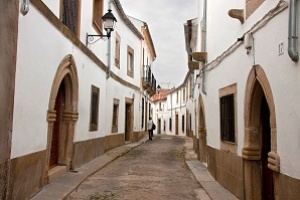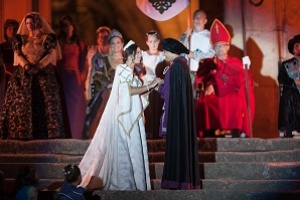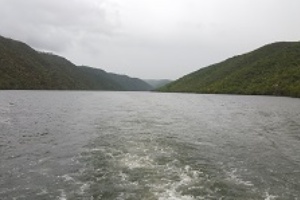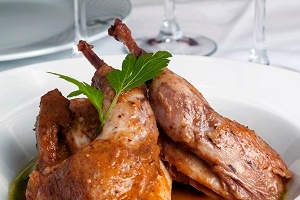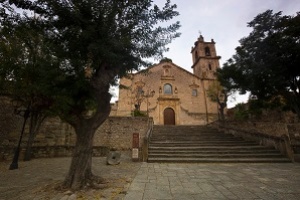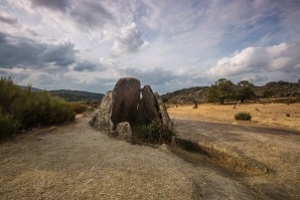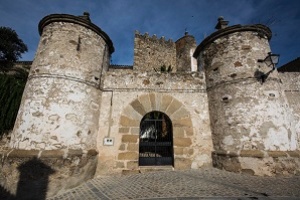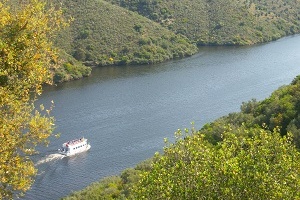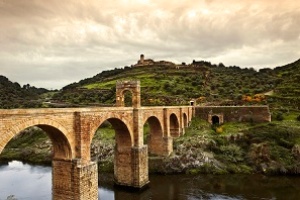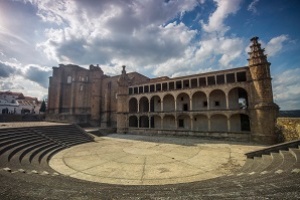Nature areas
Tajo Internacional - Reserva de la biosfera
Sailing international waters and watching eagles and vultures fly by. Visiting dozens of dolmens just over just a few kilometres. Crossing the Alcántara bridge, one of the most impressive bridges in the Roman empire. Tracing the steps of the Knights of St. Julian, tasting a cuisine full of pastoralistic, monastic and Portuguese influences.
A frontier territory rich in natural and cultural attractions
Sailing international waters and watching eagles and vultures fly by. Visiting dozens of dolmens just over just a few kilometres. Crossing the Alcántara bridge, one of the most impressive bridges in the Roman empire. Tracing the steps of the Knights of St. Julian, tasting a cuisine full of pastoralistic, monastic and Portuguese influences.
Those are only some of the experiences that the Tagus International offers you. This is a frontier territory marked by the presence of the longest river in the Peninsula Ibérica and which can boast to have been recognized with three statuses: Natural Park, International Park and UNESCO Nature Reserve.
This area has an exceptional ecological value: the Tagus and its subsidiary rivers, Erjas, Aravil, Pónsul, Salor and Sever have shaped a rugged rocky landscape, characterized by dehesas , pastures dotted with holm and cork oaks and other species typical of Mediterranean forests.
The Tagus International Natural Park stretches over 28,602 hectares in Spain (comprising the municipalities of Alcántara, Brozas, Carbajo, Cedillo, Herrera de Alcántara, Membrío, Salorino, Piedras Albas, Herreruela, Santiago de Alcántara, Valencia de Alcántara and Zarza la Mayor) and 26,484 hectares in Portugal. It was created in 2012 by means of an agreement between Spain and Portugal which made it, in fact, the first Natural Park shared by two European countries.
The Tagus International Natural Reserve is way larger. It comprises 428,176 hectares, 259,073 in Spain and 169,,103 in neighbouring Portugal. UNESCO classified it as Natural Reserve in 2016.
Tagus International is a paradise for birdwatchers; here it is possible to spot many great birds, such as Spanish imperial eagles, black storks, cinereous vultures, griffon vultures, Bonelli’s eagles, Egyptian vultures and European eagle-owls, among others. Its wildlife diversity is also noteworthy, and special mention must be made to Spanish iris (Iris lusitanica), endemic of this region.
In order to enjoy Extremadura’s landscapes and wildlife, we recommend to visit the vantage points of this Natural Park (Negrales, Las Viñas, La Geregosa, Mari Loza, etc.) and take any of the tourist boats that sail the Tagus.
History and culture
The area’s historical heritage is as vast and diverse as its natural heritage.
Valencia de Alcántara is the site of one of the best preserved and most impressive megalith ensembles in Europe, formed by more than 50 dolmens. In the same town, the Jewish quarter (the largest in Cáceres, formed by 18th streets in Gothic style and with a 15th century synagogue) and the Church of Nuestra Señora de Rocamador (15th-16th centuries), where Isabella, the eldest daughter of the Catholic Monarchs, married King of Portugal Manuel I in 1497. Every August, the locals of Valencia de Alcántara and the nearby village of Marvão, in Portugal, celebrate this historic event by re-enacting the Royal Wedding, which has been declared a Festival of Regional Tourist Interest.
Other villages in the area also have megalithic remains, such as Alcántara, Cedillo, Herrera de Alcántara and Santiago de Alcántara; the latter is also the site of El Buraco and La Grajera, with cave paintings, and the Centre for Interpretation of Megaliths.
The Bridge of Alcántara, one of the icons of Extremadura, can be admired at the town of the same name. Finished around 106 a.D., its dimensions and form make it unique in the work: it is a six-arched bridge spanning 194 metres, with a maximum height of 71 metres and 8 metres wide. It shows the three qualities required at the time for all constructions: robustness, usefulness and beauty. “This bridge will last as much as the world will last”, reads an inscription.
The bridge was built under the rule of Emperor Trajan, in whose honour a triumphal arch was built in the central section. The bridge was a part of the Roman road that linked Cordoba, the capital city of the Hispania Baetica, with Portus Cale (Porto) and Bracara Augusta (Braga). Centuries after, the bridge was renamed by Arabs as Qantarat-as Saif (Bridge of the Sword).
Another highlights of Alcántara are the Conventual de San Benito monastery, where the Festival of Classical Theatre is held, and the church of Santa María de Almocóvar, built on the site of an older Mosque; its front is one of the finest examples of Romanesque architecture in Extremadura.
This section of the Tagus International saw the creation of the Order of the Knights of St. Julian, or Order of Alcántara, which played a major role in the Reconquista, and during that age it annexed vast extensions of land, which gave the order financial and military ascendant.
Other site related to the Knights of St. Julian is the aforementioned Conventual de San Benito, the headquarters of the Order and one of the gems of the Renaissance in Extremadura, the Peñafiel Castle in Zarza la Mayor, originally an Arab fortress, overlooking an spectacular canyon over the Erjas river by the border, and the Brozas Castle, which was a major encomienda of the Knights of St. Julian. The town’s attraction include the well-preserved traces of a Roman road as well as many churches and palaces, with coat of arms, balconies and grilles that evidence the historical evidence of Brozas.
Delicious cuisine
Another reason to visit Tagus International is a cuisine that features tastes full of monastic, pastoralistic, Arab, Jewish and Portuguese influences. Its vast range of products the true star are Iberian pork products, including ham (sold with the Protected Denomination of Origin Dehesa de Extremadura) and other cured meats such as patatera (pork and cured mash), cominera (blood sausage seasoned with cumin), fariñera (blood sausage thickened with flour), cured or fresh loin, and buche (pork stomach filled with pork chops and other least valuable parts and cooked with chorizo and cabbage). Other meats such as lamb and beef (both with Protected Geographical Indications) and game also shine, as do cheeses from Carbajo and Valencia de Alcántara, olive oil, honey, freshwater fish and traditional sweets, such as mormenteras (fried doughnuts filled with an almond and honey mixture flavoured with cinnamon and aniseed), serraduras (pots of layers of crushed biscuit and a rich cream and condensed milk mixture), perrunillas (lard cookies flavoured with lemon), puchas (a sort of sweet porridge made with water, flour and sugar) and repápalos (fried olive oil doughnuts flavoured with white wine and aniseed).
Partridge cooked in the style of Alcántara is one of the iconic dishes of the area and off all of Extremadura. It dates back to 1807, when Napoleonic troops looted the Conventual de San Benito and found a cookbook. This cookbook made it to the hands of General Junot, who gave it to her wife, Laura Permon, Duchess of Abrantes, who made its concoctions popular in Paris. Decades after, Auguste Escoffier, one of the fathers of modern French cuisine, included several recipes of this Benedictine cookbook in his own repertoire, such as the consommé, truffled foie gras and the aforementioned partridge cooked in the style of Alcántara, making these dishes famous worldwide.
Festivals and festivities not to be missed
The towns within the Tagus International hold many events that celebrate their natural environment, their culture and their cuisine throughout the year. Some of the most important are:
- Enfariñamiento (Carnival) | Cedillo
- Feria del Ganado (April) | Brozas
- Domingo del Bollo (Easter) | Zarza la Mayor
- Día de la Mormentera (June) | Alcántara
- Festival de Teatro Clásico (August) | Alcántara
- Boda Regia (August) | Valencia de Alcántara
- Fiesta de la Tenca (August) | Se celebra cada año en un pueblo del Tajo-Salor-Almonte
- Jornadas de la Trashumancia (September) | Brozas
- Jornadas Gastronómicas del Tajo Internacional (September) | Valencia de Alcántara
- Caracolada Popular (October) | Alcántara
- El Magusto - Festival de música celta y folk (November) | Carbajo
- Mes de la Reserva de la Biosfera del Tajo Internacional (November)
- Jornadas de Cocina Conventual (November) | Alcántara
- Luminarias Porreteras (December) | Salorino


